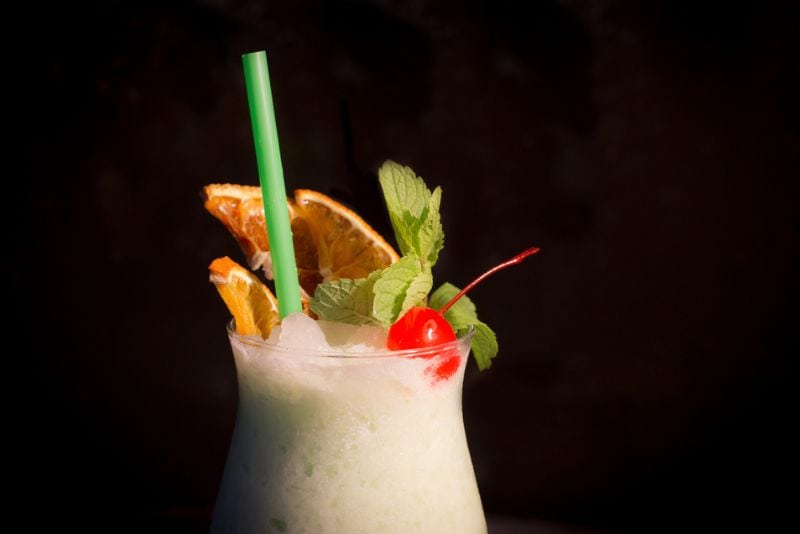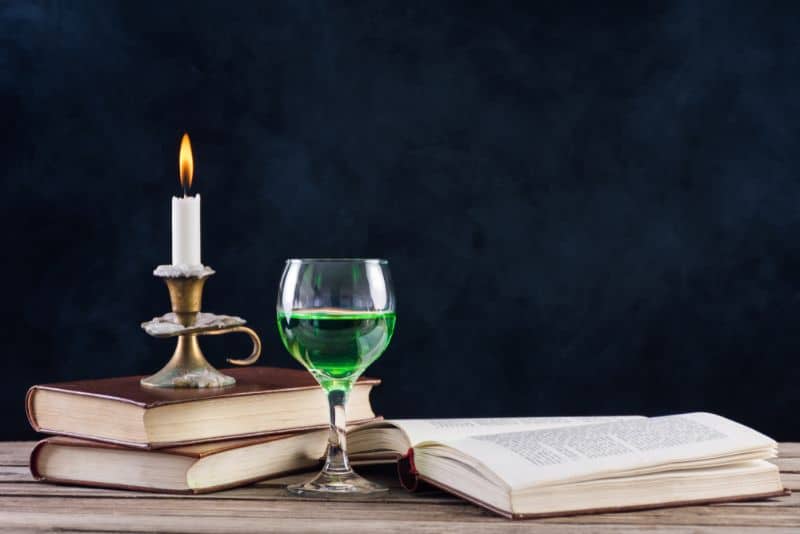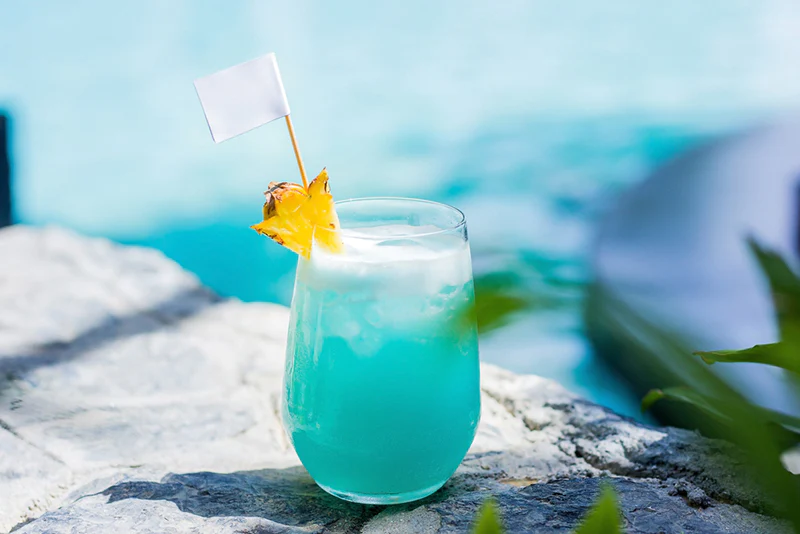Long regarded as the elixir of choice for artists and hedonists throughout the ages, where is the line between fact vs fiction surrounding absinthe?
France’s love affair with la fee verte – or the green lady – is one of the primary reasons as to why absinthe grew to such notoriety during the late 19th century. Favoured by artists, writers and bohemians alike, the streets of Paris came alive every evening once the green fairy began to flow freely. Often portrayed – and embraced – as a hallucinogenic, exactly how many of the rumours surrounding it’s consumption are true?
THE BIRTH OF THE GREEN FAIRY
Although rumours of wormwood infused brews can be traced as far back as the Egyptian Empire, the creation of absinthe as we now know it can be claimed by French doctor, Pierre Ordinaire. While residing in the small Swiss town of Couvet in the late 18th century, Dr Ordinaire produced an emerald green elixir that contained a mixture of local herbs, fennel, green anise and wormwood, which was soon regarded as a treatment for everything from anemia to flatulence.
Thankfully, Dr Ordinaire managed to pass on his recipe on his deathbed to other residents of Couvet, and in five short years, the first absinthe distillery was opened in Switzerland. It was only a matter of time before whispers of the substance’s properties spread, and in turn another distillery was opened in France shortly after, initiating the drink’s cult-like following amongst the French people.
While initially issued to French soldiers as a means to prevent malaria, public opinion surrounding the use of the green fairy soon skyrocketed. Mass production set prices at an affordable and accessible rate, and soon absinthe was consumed by aristocrats and struggling artists alike. By 1910, the French population were devouring over 36 million litres of absinth per year.
Across the sea, the green fairy was becoming an urban legend. Tales of reported psychedelic, mind-altering effects soon travelled to the United Kingdom, Spain, Czech Republic and the United States, with the latter being particularly enamoured with the liquor. Bars and nightclubs along New Orleans’ famous Bourbon Street were soon importing the stuff by the barrel, and is even credited with being the birthplace of the Sazerac, or the earliest known absinthe cocktail.
The primary mystique that surrounds the consumption of absinthe is linked to it’s alleged hallocuonigeic properties. Allegedly able to expand the consciousness of consumers and spark one’s imagination, it became the drink of choice for creatives around the world. Although no modern day peer reviewed study has ever been able to prove this, it’s widely believed that the associated “trips” are thanks to the wormwood plant, one of the key ingredients found in absinthe. Wormwood is naturally rich in thujone, a chemical compound believed to trigger inexplicable transformations of the mind. Of course, it seems only logical that such an alleged compound would be favoured by the creatives of that era, with Oscar Wilde summarising his experiences with the green fairy as both good and bad.
“After the first glass, you see things as you wish they were. After the second, you see things as they are not. Finally, you see things as they really are, and that is the most horrible thing in the world.”
Perhaps unfairly, absinthe also developed a reputation as being the undoing of many prominent minds – while the substance allegedly drove Vincent van Gogh mad and in turn suicidal, in comparison Ernest Hemingway would perform knife tricks in bars across Paris after consuming the green fairy. It became apparent that one man’s “power up” became another’s poison, and so it was inevitably that bans and stricter regulations came into effect regarding the consumption and sale of absinthe across the world.
Taming The Green Fairy
As consumption levels of absinthe grew rapidly, so did the controversy that surrounded the green liquor. Fueled by the rising concerns raised by the wine industry, it wasn’t long before absinthe consumption became linked to mania, psychosis, violent and erratic behavior.
Although many of the negative connotations associated with the green fairy were oddly enough in line with that of general alcoholism, bans of the consumption and sale of the polarizing liquor were rolled out across Europe in the early 1910’s. The drink began to fall out of favour in the 1940’s, but was never banned across several other nations as it was not deemed a significant enough risk.
The modern absinthe revival of the 21st century can arguably be linked to the fall of the Iron Curtain. In the early 1990’s, an old Czech distillery began producing absinthe again for the first time since the 1920’s based on what has since been referred to as “an old family recipe”. Marketed to a very thirsty Great Britain as a nod to the bohemians of yesteryear, consumption began to increase once more thanks to the substance featuring in prominent pop culture institutions such as Baz Lurman’s love letter to Paris, “Moulin Rouge!”.
Is Absinthe Legal In Australia?
Absinthe in Australia has always been a tricky topic to navigate. Although it has never been illegal to import or manufacture in Australia, importation requires a permit under the Customs (Prohibited Imports) Regulation 1956 due to a restriction on importing any product containing “oil of wormwood”. However, in the year 2000, an amendment made all wormwood species prohibited herbs for food purposes under Food Standard 1.4.4. Prohibited and Restricted Plants and Fungi. This amendment was later found to be inconsistent with other parts of the preexisting Food Codem, and it was withdrawn in 2002 during the transition between the two codes, thereby continuing to allow absinthe manufacture and importation through the existing permit-based system. These events were erroneously reported by the media as it being reclassified from a prohibited product to a restricted product.
Although Absinthe is now readily available in most parts of Australia, we surprisingly have less restrictions on thujone (active wormwood ingredient) than that of our European Union counterparts, which allow 25 mg/kg allowed, compared to the 35mg/kg allowed in Australia. Absinthe distilleries are considered to be rare in Australia, but the Tamborine Mountain Distillery on the Gold Coast have claimed to produce “Australia’s first premium absinthe” – the Moulin Rooz.
While nobody can say whether you’ll witness Kylie Minogue appear as the green fairy after a few glasses, there’s no denying that the controversy and mistique are all a part of absinthe’s appeal – and the global curiosity doesn’t look to be diminishing anytime soon.




